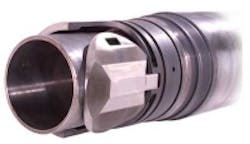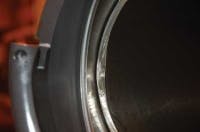Understanding performance of TRSSVs is important to cost-effective risk management
Jim Johnson, Baker Hughes Inc.
Selecting the correct tubing retrievable subsurface safety valve (TRSSV) is important to bring risk to the lowest level possible. The TRSSV protects against explosions, blowouts, and other production mishaps. While some consider TRSSVs a commodity and base purchase decisions on price, the potential costs of a safety valve failure imply that performance and reliability are the important factors.
Various methods are available to evaluate the performance of safety valves. These methods show that different safety valves differ in performance and reliability, and that all safety valves are not created equal. A case can be made that operators are responsible to stakeholders to ensure the safest and most reliable choices are made.
Costs of failure
The potential costs associated with environmental damage offshore can quickly reach tens of billions of dollars. The successful operation of safety valves was instrumental in preventing production spills in the Gulf of Mexico during Hurricane Ike.
When a safety valve fails during normal operation or testing in a dry tree well, the operator has two options:
- 1. Pull the completion and replace the valve
- 2. Lock the valve open and place a wireline insert safety valve inside the locked open TRSSV.
Pulling the completion and replacing the valve is expensive and requires a rig. Plus, there is the cost of lost production while the well is shut-in during this operation.
The less expensive option in terms of immediate costs is to place a wireline insert valve in the failed TRSSV. This does not require a rig, only a wireline or coiled tubing unit. Rates for these are miniscule compared to rig rates. The cost that needs to be considered in addition to equipment rental is the reduction in production that comes from the ID being restricted at the valve. An insert valve reduces the ID typically by about 50%. This reduces the production rates used to plan the well and can make the well uneconomical.
Methods of evaluating TRSSVs
The costs of failure have motivated the industry to develop risk reduction strategies that help ensure proper performance and reliability of TRSSVs. One common method is a series of qualification tests. For a valve to meet API 14A standards, it already must pass a number of tests. Some operators choose to run additional tests to account for special well conditions or to test for specific failures that the company has experienced.
Many operators specify a test or inspection program for safety valves. For example, A/S Norske Shell implemented a thorough and rigorous test program for its Ormen Lange Project. Testing lasted more than two years and involved putting the valves of three manufacturers through eight tests in succession without allowing redress or repair between tests. The first five tests were relatively simple, and all valves passed. Those tests were as follows:
- 1. Flapper spring compression
- 2. Control line yield
- 3. Internal pressure test
- 4. Functional cycling
- 5. Flapper low differential pressure leak test.
The last three tests were more rigorous. These were meant to test the limits of the valves and determine how they would perform in planned well conditions:
Sand-flow test: In this test, 1,000 kg (2,205 lb) of sand was suspended in gas and flowed through the valves. All valves passed.
High-rate gas slam test: The 450 MMcf/d rate that Shell wanted to test was much higher than usual for the industry. The valves were all slammed closed in 400 MMcf/d flow rates four times and 450 MMcf/d (absolute open flow rate) one time. One valve passed this test.
Lock open test: A lock open tool was run into each valve in a test well. Each valve was to be locked open and then retrieved and inspected for damage. One valve passed; the others failed due to deformation during the slam tests.
This is an extreme example of qualification testing. As stated earlier, it is more common for companies to use less rigorous testing programs to qualify the valves that they plan to use. The main flaws in qualification testing are first, that it is difficult or impossible to simulate well conditions and second, that it only tells the operator how that particular valve behaved. It does not account for true well longevity and consistency in the quality of the manufacturing process.
Reliability database
A more effective way to evaluate the performance of safety valves (or any equipment) is to study how they perform in actual wells over extended periods of time. Some operators have systems to track completion equipment performance. Many of these systems have limited success due to a lack of commitment in keeping the data current. Internal personnel often struggle with the time consuming task of data maintenance, but without up-to-date input, these databases have limited usefulness.
When using reliability data to evaluate safety valves, the more data available, the better the picture will form terms of the reliability of those valves. A source of a comprehensive safety valve performance data is Wellmaster1, a reliability database maintained by third-party company ExproSoft. Wellmaster is a joint effort of more than 10 operating companies and contains equipment data, including failures, from nearly 3,000 wells. The database reflects more than 17,000 completion-years of service. Wellmaster has compiled data on more than 11,500 years worth of safety valve service time.
This data enables operators to calculate Mean Time to Failure (MTTF) for safety valves. MTTF is a calculation that sums the number of years each type of valve has been in service and divides that by the number of failures of those valves over that time. Although MTTF is not a perfect measure of reliability, it is recognized as a useful performance indicator. This is true especially when it is calculated using large sample sizes such as the Wellmaster database. The contributing companies also have access to more detailed data from which to do more detailed analyses.
Non-contributing companies can purchase a report that shows MTTF for each type of valve from each major manufacturer. These are categorized by features such as type of flapper, metal-to-metal seals, and equalizing versus non-equalizing. The results of the most recent study (Phase V) indicate major differences in the performance of the various safety valves in the marketplace. The best performing manufacturer had a MTTF of 104.2 years, while the other two were at 40.2 and 37.1 years. The performance and reliability differences – and the data from which they are derived –are worth noting when specifying TRSSVs in completion designs.
Conclusion
Health, safety, and environmental risks need to be managed as effectively as possible or risk large financial penalties. Operators should be aware that there are tools available to them to help them minimize some of the risks they face in terms of safety valve reliability. Qualification testing, while common, may not be the best option, especially for marginally producing wells. Reliability data is a better evaluation tool. Some operators view all safety valves as essentially equal in terms of design and reliability and base their decision completely on price. The ExproSoft data demonstrates this assumption is incorrect. Use of available, statistically valid information to examine safety valve reliability is an inexpensive risk management solution.







